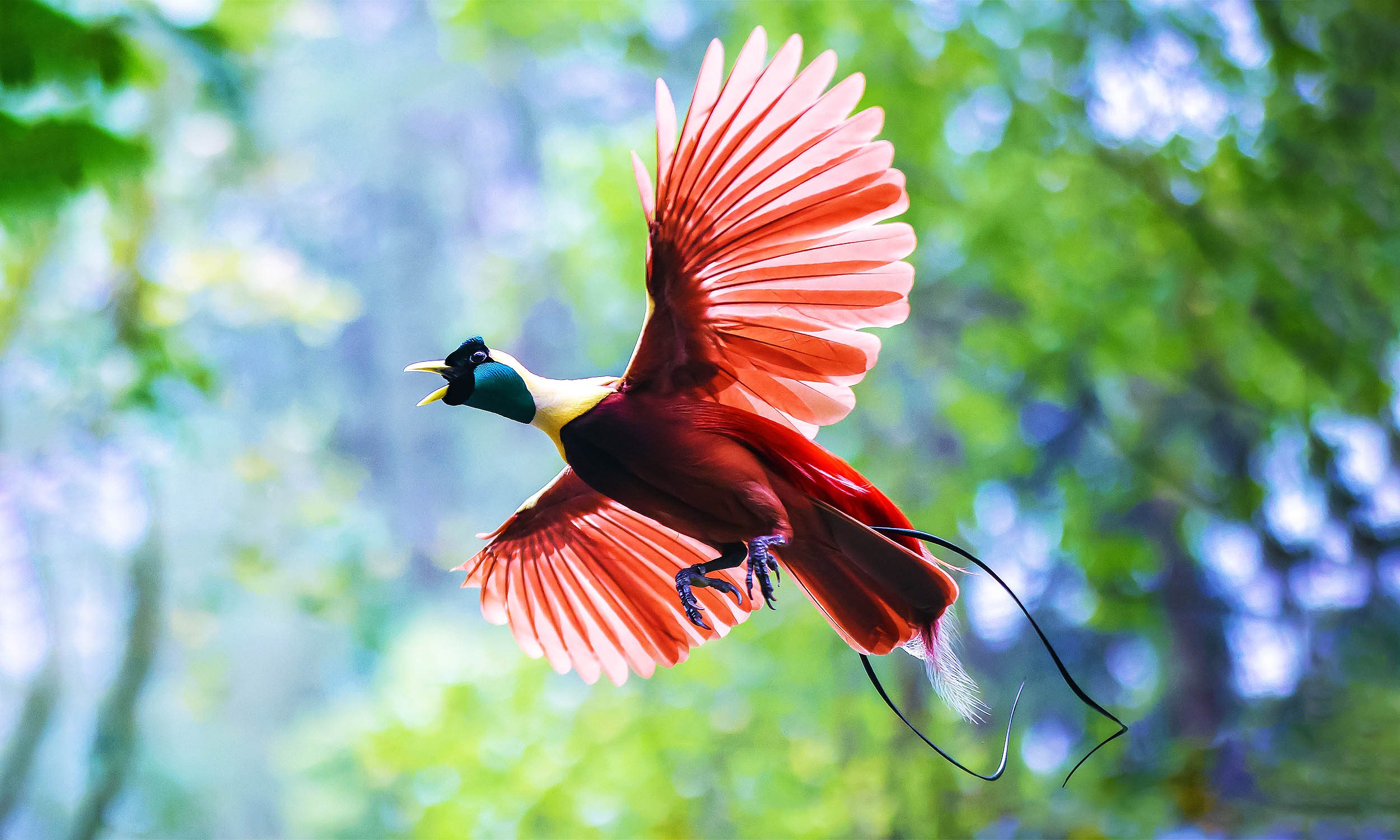
Recent studies have uncovered that biofluorescence is remarkably prevalent among birds-of-paradise, a vibrant group of tropical avians celebrated for their stunning courtship performances and eye-catching feathers.
The findings indicate that biofluorescence is present in 37 of the 45 documented species, with males exhibiting this intriguing trait more prominently. This hidden luminescence may play a vital role in mate attraction and establishing social hierarchy.
This research was carried out by experts from the American Museum of Natural History (AMNH) in collaboration with the University of Nebraska-Lincoln.
Illuminating Mating Rituals
Birds-of-paradise are native to tropical regions in eastern Australia, Indonesia, and New Guinea. For many years, scientists have been captivated by their unique feather displays and extraordinary dances performed by males to woo females.
Biofluorescence is a biological process in which an organism absorbs light at one wavelength and then re-emits it at another.
New insights into biofluorescence suggest that these spectacular birds may possess yet another visual feature: a layer of fluorescent signals that remains invisible to the human eye unless viewed through special instruments.
Lead author of the study, Rene Martin, an assistant professor at the University of Nebraska-Lincoln, commented, “The fascinating mating behaviors and displays of birds-of-paradise have intrigued researchers, inspiring numerous studies on the evolution of traits and mating preferences. It’s compelling to consider that these vivid birds are likely communicating through even more vibrant channels.”
Finding Fluorescence in Birds-of-Paradise
This research leverages specimens collected as far back as the 1800s, held within the extensive ornithological collection at the American Museum of Natural History.
About ten years ago, Museum Curator John Sparks, originally an ichthyologist, observed that some bird species, including certain birds-of-paradise, emitted a green-yellow glow under specific light types. This prompted a more thorough investigation into avian biofluorescence.
“Despite the existence of over 10,000 identified bird species and many studies on their vivid plumage and courtship rituals, surprisingly few have explored the phenomenon of biofluorescence,” Sparks noted.
Martin and Emily Carr, a PhD candidate at the Museum’s Richard Gilder Graduate School, expanded on Sparks’ discoveries as part of their research. Utilizing ultraviolet (UV) light, they found that these birds not only appear to glow under blue light but also fluoresce intensely under UV exposure.
This effect was predominantly noted in the male feathers that are critical during courtship—specifically in areas such as the head, belly, neck, and the inside of the mouth and bill.
Fluorescence More Pronounced in Males
The study revealed that male birds of paradise showcase vibrant fluorescence, commonly in regions accentuated during mating displays. Females, while also exhibiting this trait, do so to a lesser extent, primarily on their bellies and chests. The equatorial habitats of these birds may provide a diverse range of light conditions, enhancing the visibility and effectiveness of biofluorescence.

“These avian species thrive near the equator, where bright solar energy is abundant year-round, and they reside in complex forest environments where light conditions are significantly influenced by canopy variations, enhancing biofluorescent visibility,” Carr explained.
The Importance of Bird Fluorescence
Recent examinations of closely related avian species indicate that the birds-of-paradise possess eye pigments aligned with fluorescence peaks outlined in this research, suggesting they can detect these radiant patches.
In a group already known for its visually striking displays, the newly discovered fluorescent signals may provide a finer level of detail for courtship and territorial behaviors.
During an intricate mating dance, the green-yellow sheen from certain feathers could function like an elusive spotlight, contrasting with the bird’s darker feathers. This might enhance female attraction or indicate social standing among rivals.
Broader Implications for Avian Research
While birds-of-paradise are extensively studied for their behaviors and coloration, the discovery of widespread fluorescence hints at a more intricate signaling system among these species than previously understood.
The presence of fluorescent markings in such a large number of species raises questions about whether other bird lineages, particularly those with vivid plumage or complex displays, might also exhibit biofluorescence.
Researchers plan to explore how external factors—such as canopy coverage, seasonal light changes, and habitat loss—could influence these glowing displays. Gaining insight into how birds-of-paradise perceive biofluorescence could also shed light on the evolution of sexual selection and communication within avian species.
This investigation changes the way scientists comprehend the “hidden language of light” that these flamboyant birds utilize for communication.
With advancements in imaging technologies and a greater acknowledgment of avian fluorescence, researchers may soon discover that this secret glow extends to many avian species, particularly those recognized for their striking visual characteristics.
The study was published in the journal Royal Society Open Science.
—–
Enjoying the content? Subscribe to our newsletter for captivating articles, exclusive insights, and the latest updates.
Connect with us on EarthSnap, a free app developed by Eric Ralls and Earth.com.
—–









